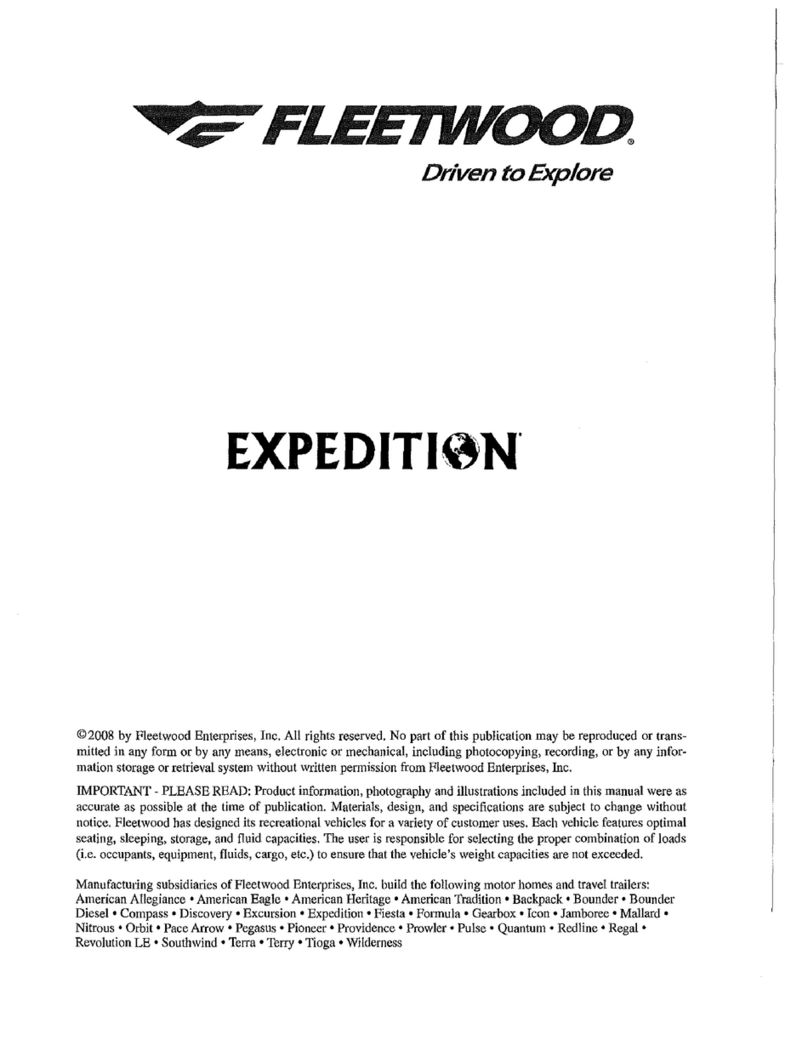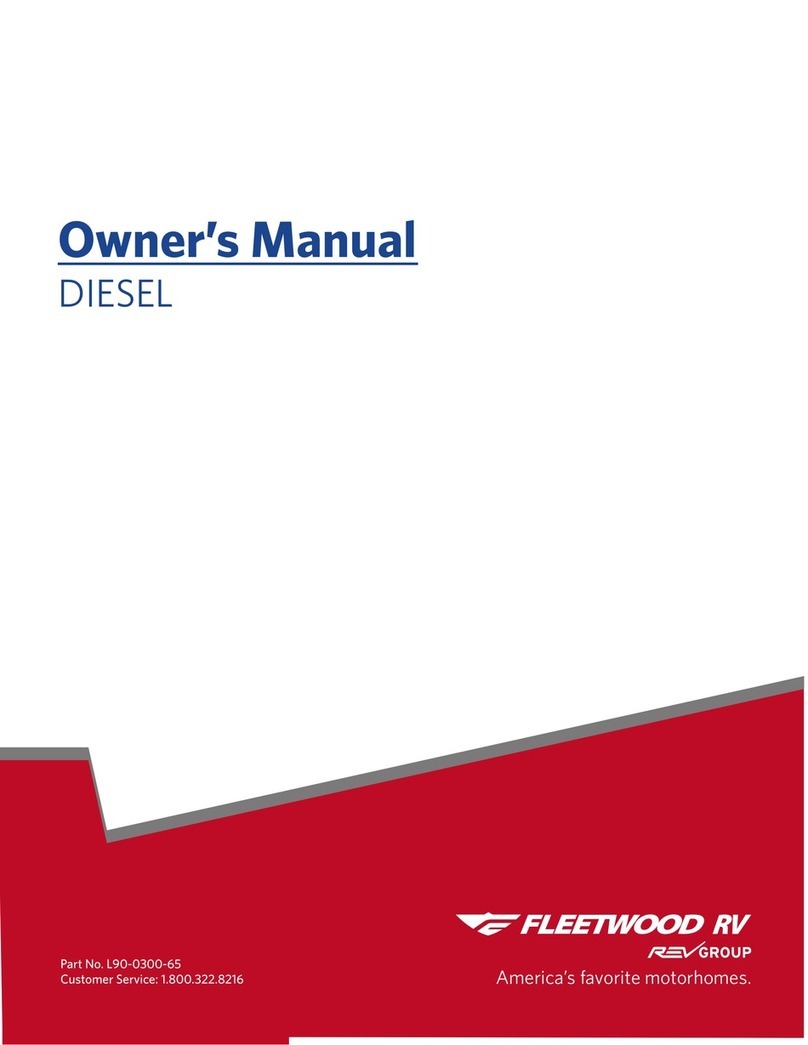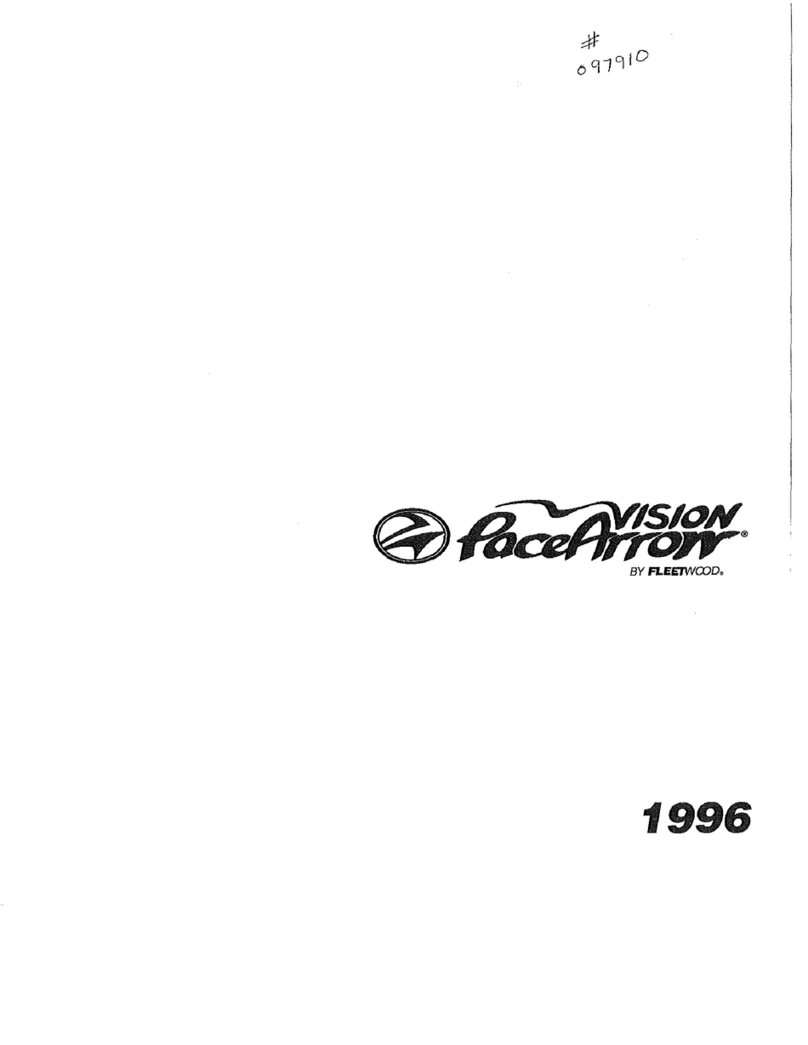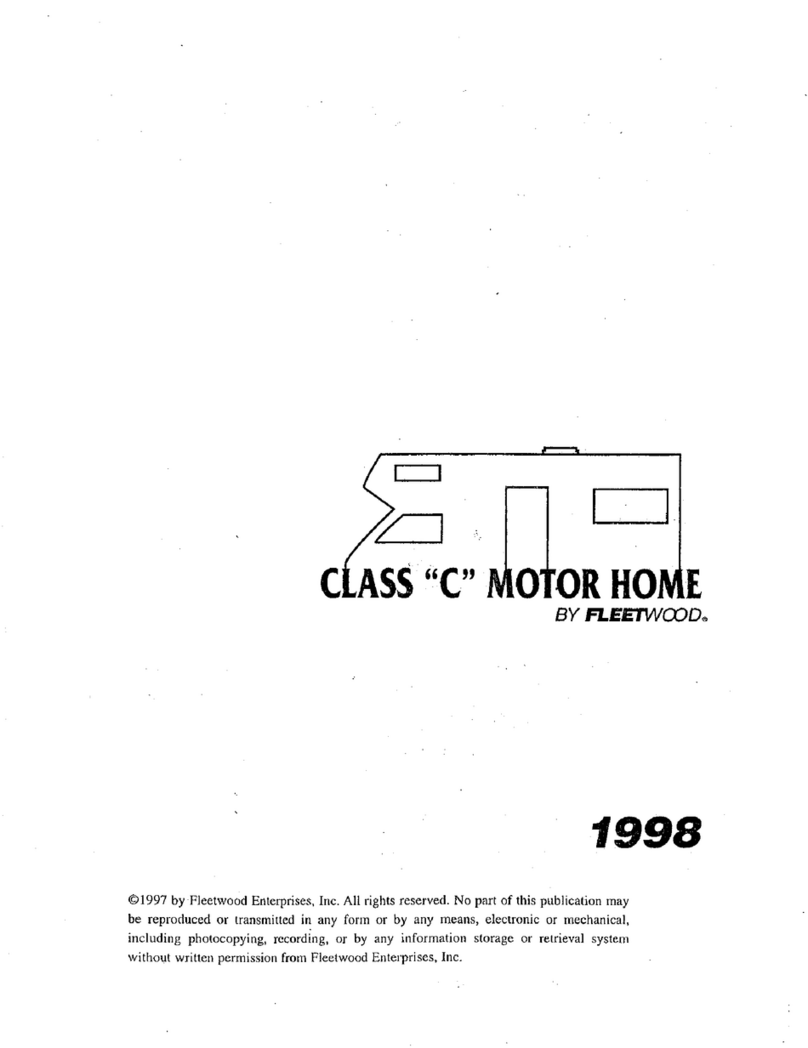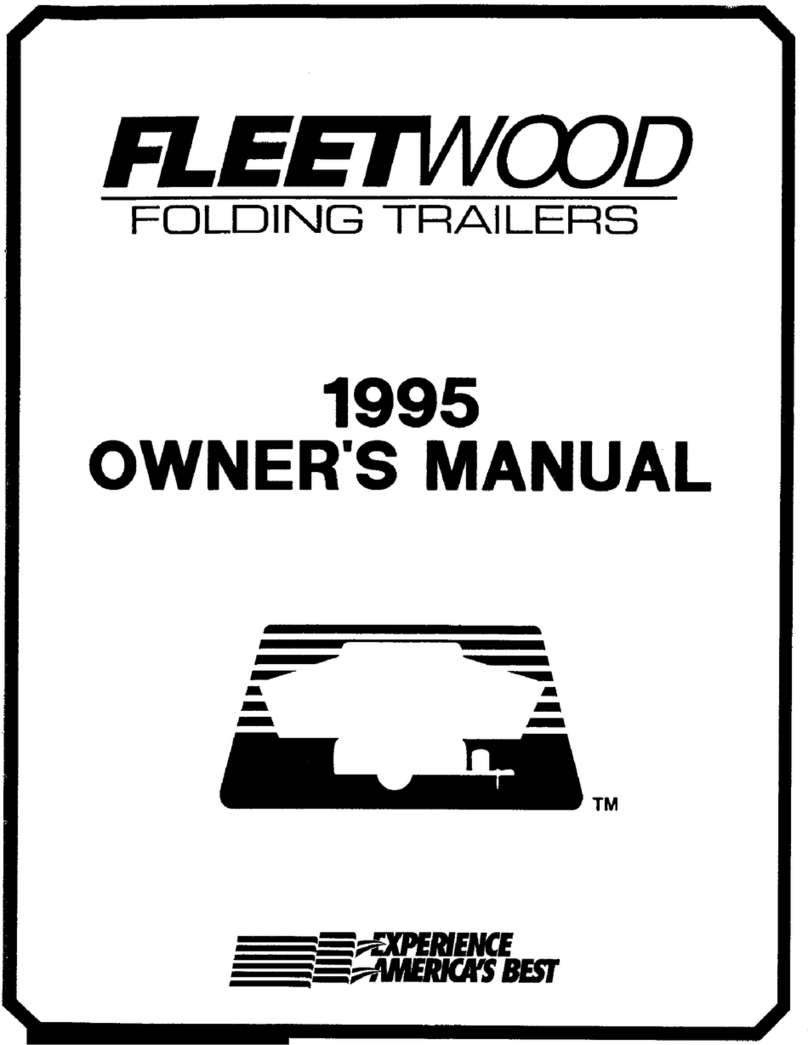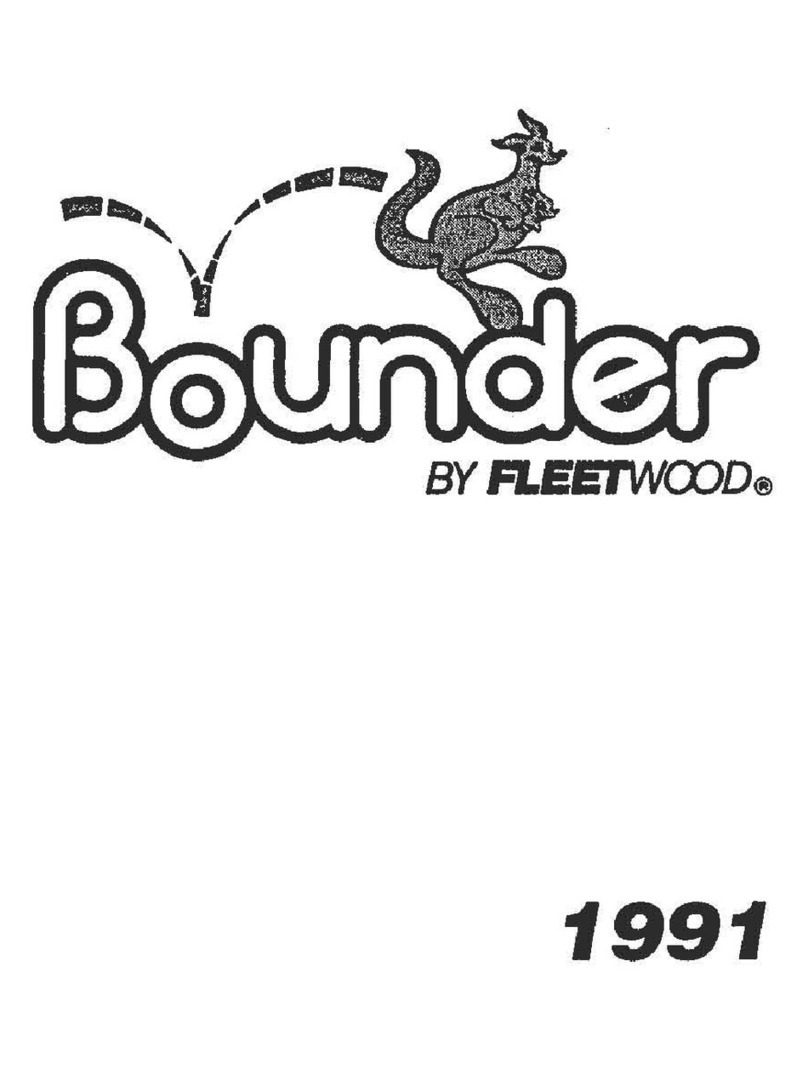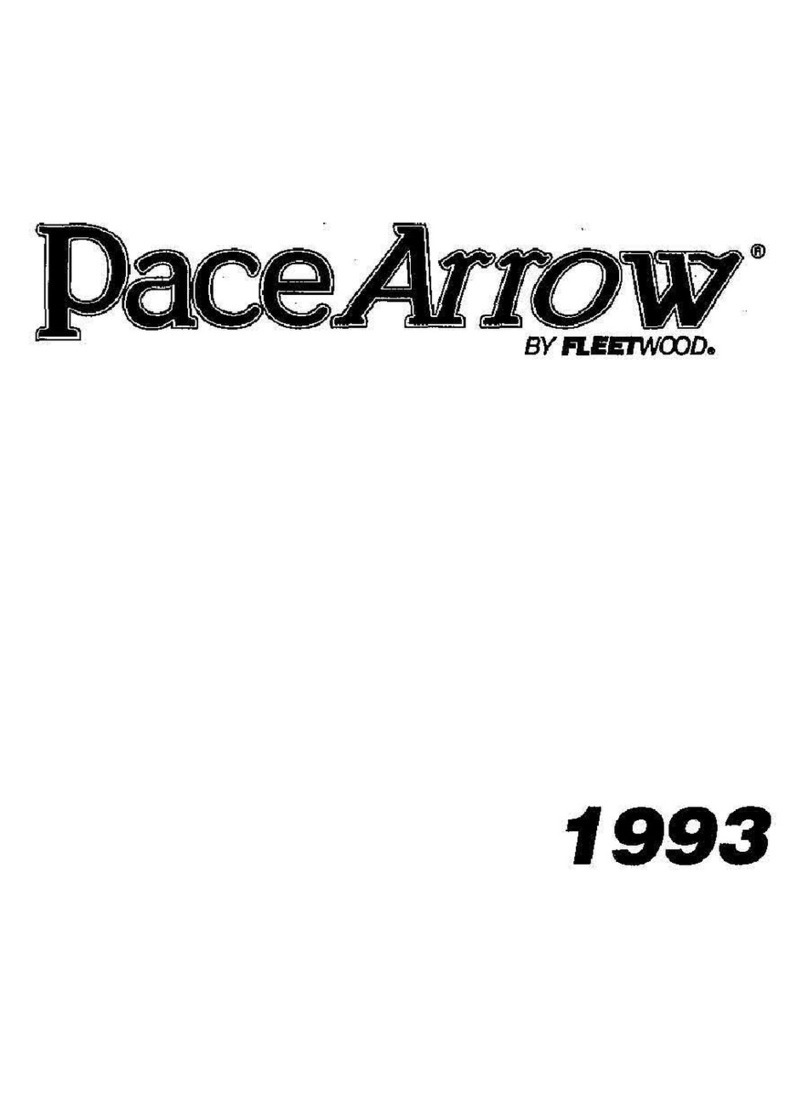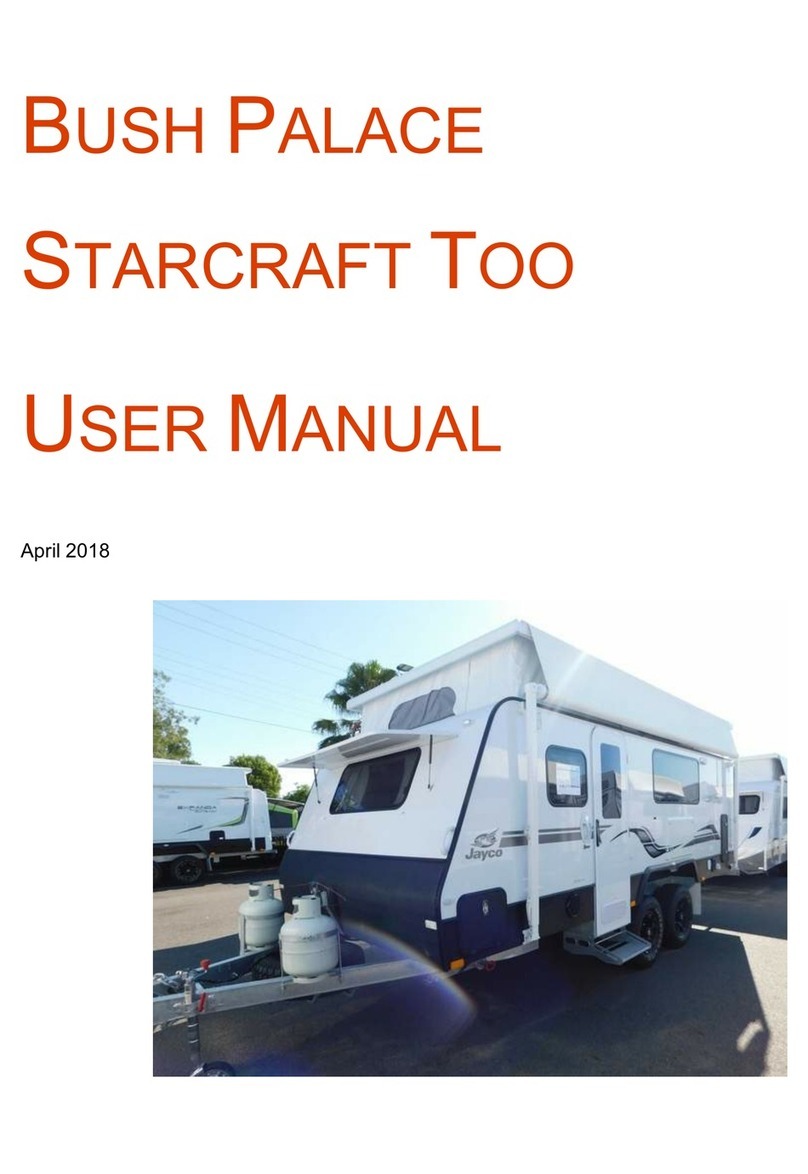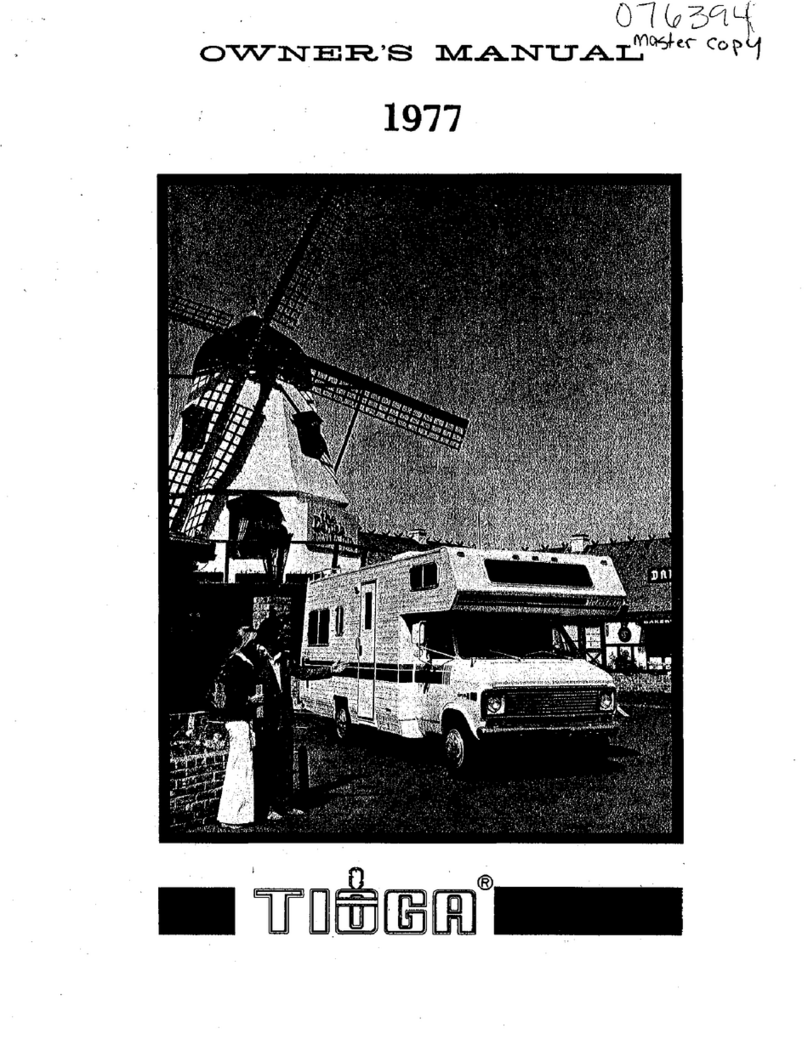
FULL
ONE-YEAR/15,OOO
MILE
...-----WARRANTy------
FOR
MOTOR HOMES MANUFACTURED
BY
SUBSIDIARIES
OF
flEETWOOD
ENTERPRISES, INC.
SOLD IN THE UNITED STATES
AND
CANADA
COVERAGE
PROVIDED
Your
new
motor
home, including the structure, plumbing, heating and electrical systems, and all appliances and equipment Installed by the
manufacturer, is warranted under normal use
to
be free from manufacturing defects in material or workmanship.
The warrantY extends
to
the first retail purchaser and his transfereelal and begins on the date
of
original retail delivery or the date the motor
home is first placed into service
as
a rental, commercial or demonstrator
unit
(whichever occurs first). The warranty extends
for
a period
of
one year from such date or until the unithas received 1
5,000
total miles
of
use
as
datermined by the mileage shown on the odometer (whichever
occurs firstl, Written notice
of
defects
must
be given
to
the selling dealer or the manufacturer
not
later than ten (10) days after the expiration
of
the applicable warranty period.
OWNER'S OBLIGATIONS
The owner is responsible
for
normal maintenance
as
described in the
Owner's
Manual; however, minor adjustments (such
as
adjustments
to
the interior
of
exterior doors,
LP
regulator pressure, cabinet latches, TV antenna control, etc.) will
be
performed by the dealer during the
first
90
days
of
warranty coverage. Thereafter, such adjustments
are
the responsibility
of
the
owner
as normal meintenance unless required
as
a direct result
of
repair or replacement
of
a defective part under this warrenty.
If
a problem occurs
which
the
owner
believes is covered by this warranty, the owner shall contact the SELLING DEALER, or other authorized
dealer, giving him sufficient information
to
resolve the matter. The
owner
shall deliver the
motor
home
to
the
DEALER
or manufacturing plant
location for warranty service.
DEALER'S OBLIGATIONS
By agreement
with
the manufacturer, the dealer is obligated
to
maintain the
motor
home prior
to
retail sale,
to
perform a detailed predelivery
inspection and
to
repair or replace any parts necessary
to
correct defects in material or workmanship.
WHEN
THE
DEALER
DOES
NOT RESOLVE
THE
PROBLEM
If
the dealer
is
unable orunwilling
to
resolve a problem which the owner
is
convinced
is
covered bythe warranty,
he
should contactthe MANUFAC-
TURING PLANT at the address listed below and provide the manufacturer
with
a description in
writing
of
the problem and attempts made
to
resolve it.
MANUFACTURING PLANT OBLIGATIONS
Upon receipt
of
notice
of
a claim, where the dealer was unable or unwilling
to
resolve the problem, the manufacturing plant will repair or replece
any perts necessary
to
correct defects in material or workmanship, or will take other appropriate action
as
may
be
required.
WHEN
THE
MANUFACTURING PLANT DOES NOT RESOLVE
THE
PROBLEM
If
the represantatives
of
the manufacturing plant
are
unable
to
resolve the problem and the owneris convinced that
it
is covered by the warranty,
the
owner
should call the toll-free number listed below
to
describe the problem and the attempts made
to
resolve it.
WHAT
IS
NOT
COVERED
BY
THE
EXPRESS
WARRANTY
THIS WARRANTY
DOES
NOT COVER:
1.
THE
AUTOMOTIVE SYSTEM (INCLUDING
THE
CHASSIS AND
DRIVE
TRAIN),
TIRES
AND BATTERIES, WHICH
ARE
COVERED
BY
THE
SEPARATE WARRANTIES
OF
THE
RESPECTIVE
MANUFACTURERS
OF
THESE
COMPONENTS.
2. DEfECTS CAUSED
BY
OR
RELATED TO:
A. ABUSE, MISUSE,
NEGLIGENCE
OR
ACCIDENT;
B.
FAILURE TO COMPLY WITH INSTRUCTIONS CONTAINED
IN
THE
OWNER'S
MANUAL'
C.
ALTERATION
OR
MODIFICATION
OF
THE
MOTOR HOME;
3. NORMAL DETERIORATION
DUE
TO WEAR
OR
EXPOSURE, SUCH AS FADING
OF
FABRICS
OR
DRAPES, CARPET WEAR,
ETC.
4. NORMAL MAINTENANCE AND SERVICE ITEMS, SUCH AS LIGHT BULBS,
FUSES,
WIPER
BLADES, LUBRICANTS, ETC.
5.
MOTOR HOMES
ON
WHICH
THE
ODOMETER READING HAS
BEEN
ALTERED.
6. TRANSPORTATION TO AND FROM
DEALER
OR
MANUFACTURING PLANT LOCATION, LOSS
OF
TIME, INCONVENIENCE, COM-
MERCIAL LOSS, LOSS
OF
USE, TOWING CHARGES, BUS FARES, CAR RENTAL, lNCtDENTAL CHARGES SUCH AS
TELEPHONE
CALLS
OR
HOTEL BILLS,
OR
OTHER
INCIDENTAL
OR
CONSEQUENTIAL DAMAGES.
SOME STATES
DO
NOT ALLOW
THE
EXCLUSION
OR
LIMITATION
OF
INCIDENTAL
OR
CONSEQUENTIAL DAMAGES,
SO
THE
ABOVE LIMITATION
OR
EXCLUSION
MAY
NOT APPLY TO YOU.
THIS WARRANTY GIVES YOU SPECIFIC LEGAL RIGHTS, AND YOU
MAY
ALSO HAVE OTHER RIGHTS WHICH VARY FROM STATE TO STATE.
THE MANUFACTURER
IS
NOT RESPONSIBLE
FOR
ANY UNDERTAKING, REPRESENTATION,
OR
WARRANTY MADE
BY
ANY
DEALER
OR
OTHER
PERSON
BEYOND THOSE EXPRESSLY
SET
FORTH
IN
THIS WARRANTY.
Brand
Name'_----'S::.O=U-'-T'-'H"W-"''''N'''O'---
________
Mode'
________
Seria' No.
_______
_
MANUFACTURING PLANT: CORPORATE HEADQUARTERS:
Con&l,Imer
Affairs
Department
Fleetwood Enterprises, Inc.
P.O.
Box
7300
Riverside, California
92523
From
Calif.: (800) 442-4804
From Outside of Calif.: (800)
854-4755
printed
in
USA
